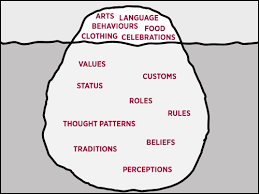Cultural Literacy.
 Brand planners look in many places when working brand strategies. A long time ago I did an exploratory with Paul Matheson head of BBH planning in NYC when they were just getting a foothold in the states. He asked me some of the areas I studied as a planner. It was a long time ago and I don’t recall my exact answer but his response to me was “Most planners mention two things, you mentioned 6 of the 7 we typically study.” I blushed.
Brand planners look in many places when working brand strategies. A long time ago I did an exploratory with Paul Matheson head of BBH planning in NYC when they were just getting a foothold in the states. He asked me some of the areas I studied as a planner. It was a long time ago and I don’t recall my exact answer but his response to me was “Most planners mention two things, you mentioned 6 of the 7 we typically study.” I blushed.
One thing I mentioned was culture. Not business culture, but consumer and population culture. Anthropology stuff.
Today, as we in the U.S. await Jerome Powell’s speech on the state of the economy, it might be a good time to assess the economic culture facing all brands. Dollar Stores are reporting more monied consumer shopping with them, and one only has to look at consumers filling their cars with gas to know many Americans are not happy. That said, I live in a small city, proud of its robust tourist economy, and one can see by the traffic in town that not everyone is concerned about the price of a meal. The broadcast news media can’t go 8 minutes without talking about inflation yet they quickly report unemployment is at an all-time low. It’s like watching a game of ping pong.
So here’s the cultural insight. Americans are money obsessed. And we don’t want to be. All banks and lenders understand this obsession and play to it. So what do about this obsession? We need to educate. We need better financial literacy. Leaders educate. JPMorgan Chase is a leader. If they spent 1/3 of their ad budget for 5 years educating Americans about finances and money and savings, targeting Americans of all strata, they could reduce our obsession. And reap the rewards.
Peace.






